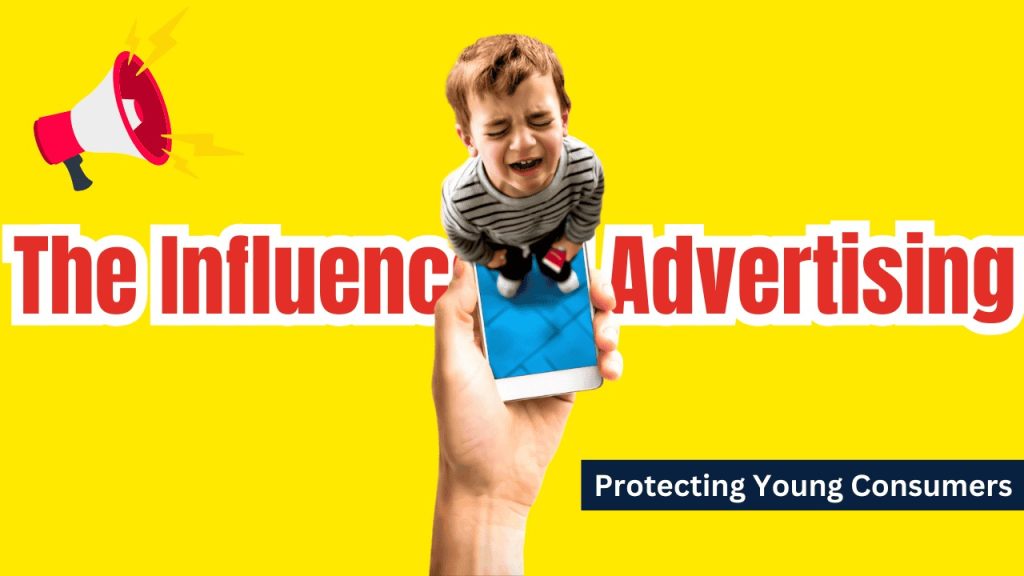
Advertising plays a significant role in shaping the choices and preferences of consumers, including children. Companies target young audiences through various media platforms such as television, social media, online games, and even educational apps. While advertising can introduce children to new products and ideas, it also raises concerns about its impact on their development, health, and behavior. Parents need to understand how advertising influences children and explore strategies to mitigate its negative effects.
How Advertising Targets Children
Children are a prime target for advertisers due to their impressionable minds and ability to influence family purchases. Companies use several techniques to attract children’s attention and encourage them to develop brand loyalty at an early age.
1. Bright Colors and Engaging Graphics
Many advertisements designed for children feature vibrant colors, animated characters, and visually appealing graphics. These elements make ads more attractive and memorable, ensuring that young viewers remain engaged.
2. Cartoon Characters and Celebrities
Marketers often use popular cartoon characters or celebrities that children admire. Associating a product with a beloved character makes children more likely to want it, even if they do not need it.
3. Emotional Appeal
Advertisements often tap into children’s emotions, making them feel excitement, happiness, or even peer pressure. By showing children having fun or feeling included, marketers create a sense of desire for the advertised product.
4. Interactive and Digital Ads
With the rise of digital technology, companies use interactive advertisements in mobile apps, video games, and websites. These ads engage children through games, quizzes, or augmented reality, making the marketing message more immersive and persuasive.
5. Free Gifts and Collectibles
Many fast-food chains and toy companies use gifts and collectible items to encourage repeat purchases. When children receive a free toy with a meal, they may persuade their parents to buy the product repeatedly to complete a set.
6. Influencers and Social Media
Social media influencers and YouTubers promote products in a way that seems natural rather than like traditional advertisements. Since children often trust and look up to these influencers, they may be more easily swayed by their endorsements.
Negative Effects of Advertising on Children
While advertising helps businesses thrive, excessive exposure to ads can have negative consequences for young minds.
| Negative Effect | Description |
|---|---|
| Encouraging Materialism | Frequent exposure to ads can make children believe that happiness comes from owning products. |
| Unhealthy Eating Habits | Many ads promote sugary and processed foods, influencing poor dietary choices. |
| Impatience and Instant Gratification | Ads can make children expect quick rewards, reducing patience and resilience. |
| Unrealistic Expectations | Products are often exaggerated in ads, leading to disappointment. |
| Pestering and Parental Pressure | Children may pressure parents into unnecessary purchases due to ad exposure. |
Strategies for Parents to Mitigate Negative Impacts
Although advertising is a part of modern life, parents can take proactive steps to reduce its influence and teach children how to be responsible consumers.
1. Limit Screen Time
Reducing the amount of time children spend watching TV or using digital devices can decrease their exposure to advertisements. Setting screen time limits and encouraging outdoor or creative activities can help.
2. Teach Media Literacy
Educating children about how advertisements work can make them more critical viewers. Parents can explain that ads are designed to sell products and may not always tell the whole truth.
3. Encourage Healthy Eating Choices
Parents can teach children to recognize unhealthy food advertising and make better dietary choices. Cooking healthy meals at home and involving children in meal preparation can help them develop a preference for nutritious foods.
4. Watch and Discuss Ads Together
Instead of banning advertising completely, parents can watch commercials with their children and discuss their messages. Asking questions like “Do you think this toy works that way?” or “Why do you think they used this character in the ad?” helps children think critically.
5. Use Ad-Free Platforms
Streaming services, educational apps, and premium subscriptions often offer ad-free experiences. Choosing these options can reduce children’s exposure to advertisements.
6. Set a Good Example
Children learn by observing their parents. If parents demonstrate thoughtful spending habits and prioritize needs over wants, children are more likely to develop similar attitudes toward consumption.
7. Encourage Creative Play
Instead of relying on commercialized toys, parents can encourage activities that foster creativity, such as arts and crafts, outdoor play, and storytelling. This helps children enjoy experiences rather than material possessions.
8. Establish Family Rules on Purchases
Setting clear guidelines about what can and cannot be bought helps children understand responsible spending. Parents can involve children in discussions about budgeting and saving money.
Summing Up
Advertising has a powerful influence on children, shaping their desires, habits, and perceptions. While it is impossible to eliminate advertising, parents can take proactive steps to reduce its negative effects. By teaching media literacy, encouraging healthy habits, and setting good examples, parents can help children become mindful consumers. With the right approach, children can enjoy the benefits of advertising without falling victim to its manipulative tactics.













